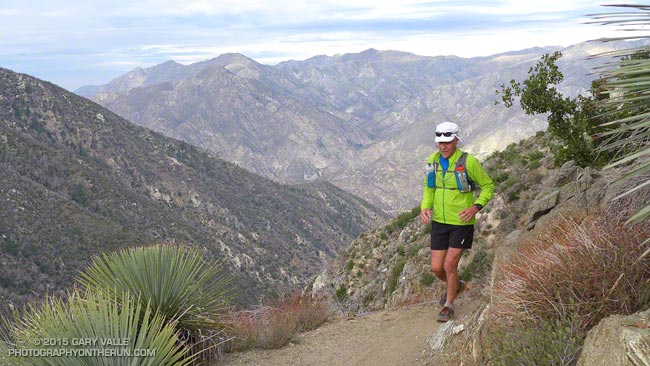
Did the circuit around Strawberry Peak with Craig this morning. There was a little rain on the last few miles of the run, but the changeable weather just made the run better.

Did the circuit around Strawberry Peak with Craig this morning. There was a little rain on the last few miles of the run, but the changeable weather just made the run better.
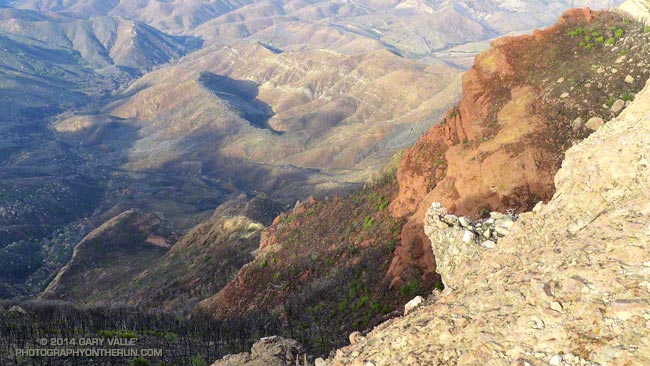
The photo above was taken from the edge of the western escarpment of the Boney Mountain massif in the western Santa Monica Mountains. The western side of the mountain is a huge bowl that funnels runoff into Blue Canyon. Blue Canyon can be seen on the left side of the photograph. It is a tributary of Big Sycamore Canyon. More than 60% of the Blue Canyon drainage was burned in the May 2013 Springs Fire.
In the early morning hours of Friday, December 12, 2014, a very strong cold front, enhanced with moisture from an atmospheric river, produced a line of strong storms that produced rain rates in the Springs Fire burn area as high as 2 inches per hour. This resulted in widespread flash floods and debris flows in the burn area, much of which is in Pt. Mugu State Park. Mud and debris flows originating from the burn area inundated homes below Conejo Mountain and closed Pacific Coast Highway.
This slideshow includes photos of the aftermath of the flash floods and debris flows in Blue Canyon, Sycamore Canyon and Upper Sycamore. These were taken on a trail run on December 14, 2014. Also included are some NWS Los Angeles/Oxnard tweets and some additional meteorological images and info.
Note: According to the Pt. Mugu State Park web site, the Park is closed until “at least January 12, 2015.”
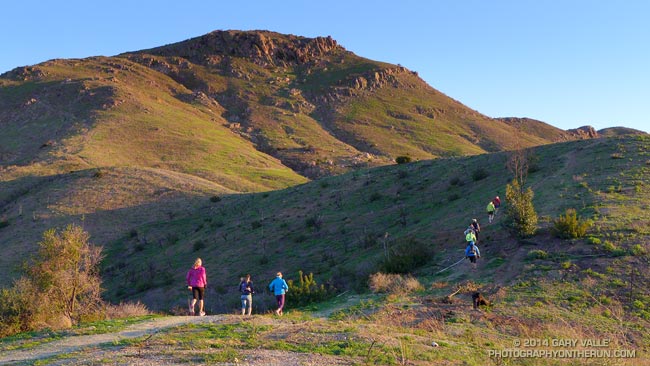
The first stop on Ann Ongena’s excellent end of year “Tour du Conejo Dos Vientos” was Conejo Mountain. In keeping with run’s theme, it was a bit breezy on top — maybe 45-50 mph.
This warm-up (warm up?) was followed by a fun circuit linking trails in the Dos Vientos Open Space trail system.
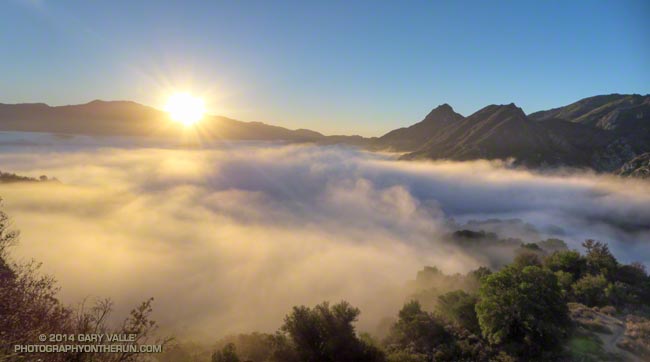
The sun rises over the shoulder of Saddle Peak illuminating a shallow layer of fog in Malibu Canyon.
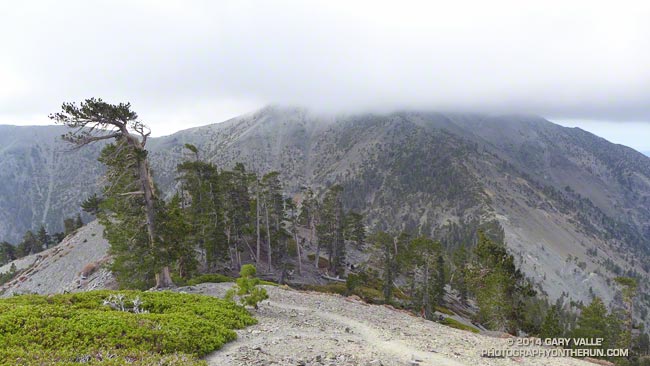
Mt. Baldy from the North Backbone Trail
According to my car’s thermometer the temperature in the west San Fernando Valley was 86 degrees. To the east a large patch of middle-level clouds had morphed into a large lenticular cloud. Over the course of a few minutes the wave cloud continued to transform, dividing into a train of alto-cumulus waves.
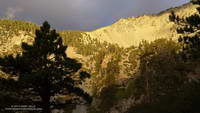
I just shook my head. A few hours earlier and 60 miles away, I had been freezing. The plan had been to do a “Baldy Over the Top” run to the old juniper on the north side of Pine Mountain. Around 8:45 am, as running partner Ann Ongena and I crested the cloud-capped, 10,064′ summit of Mt. Baldy, the wind chill temperature had been around 30 degrees. The air temperature was in the low 40s, but with the wind blowing at least 40 mph and gusting to over 50 mph it had been brutally COLD. Especially in running shorts.
Spending zero time on the summit, we waved to the hikers huddled in the rock windbreaks as we sprinted by. The hope had been that the wind (and temperature) would moderate as we descended the North Devil’s Backbone on the back side of Baldy.
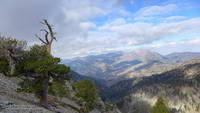
It didn’t. Wind-driven clouds continued to sweep past the ridge as we ran down the steep path. At the first opportunity we stopped in the wind shadow of a clump of stunted lodgepole pines and put on wind/rain shells. The shells were three ounces of magic — without them it would have been foolhardy to continue.
As we descended to the Baldy – Dawson Saddle and then climbed up to Dawson Peak I kept looking back over my shoulder to the cloud-shrouded summit of Mt. Baldy. Were there more clouds? Was the ceiling lower? Was there more vertical development?
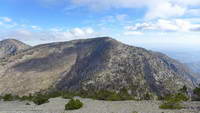
The day before I had checked the forecast from the NWS and the forecast models. A dissipating cold front was approaching the area from the north, but wasn’t expected to pass through until sometime tonight. No measurable rain was forecast for the Los Angeles area. The last time I had checked no clouds had been forecast for Saturday morning — but there they were. I had expected some southwesterly winds ahead of the front, but nothing like this.
I didn’t like being on the back side of the mountain in potentially bad weather knowing that “home” was on the front side. We had just enough gear to deal with the current conditions. I didn’t think it was very likely, but if the weather deteriorated…
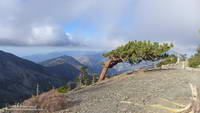
Many of the incidents that occur in the outdoors are the result of a series of misjudgments. If you’re already on the edge it’s usually best to call it before things get REALLY complicated.
And that’s exactly what we did. After descending a short distance down the ridge from Dawson Peak we turned around. Even if the outing was going to be a bit shorter than planned, it was still going to be an outstanding hike and run in extraordinary conditions with over 6000 feet of elevation gain.
It was just as windy, cold and cloudy on the second trip over the top of Baldy as it had been on the first and we spent about the same number of milliseconds on the summit before picking up the Devil’s Backbone trail and running down.
Some related posts: Mountain Weather, Atmospheric Dynamics
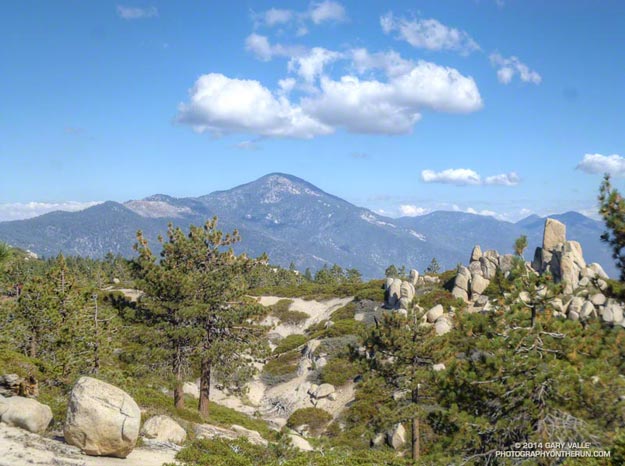
The contrast in temperature was remarkable. On a run at Ahmanson earlier in the week the temp had been over 100. Here on the north shore of Big Bear Lake it was about 60 degrees cooler.
It was 4:45 am and 54 two-legged runners, and one four-legged runner (Lacey) were scattered around the Meadow’s Edge Picnic Area. Some runners were sitting in cars with the motor on and heater running, some were checking in and picking up their bib numbers and making last minute preparations. One bare-armed runner in shorts and a singlet had appropriated a bathroom in lieu of a jacket.
At about 5:00 am were were on our way. The stars glittered brightly on an inky background of mountain sky. Surrounded by a frame of pines the iconic Winter constellation Orion ran across the southeastern sky, the brilliant dog star Sirius following at his side.
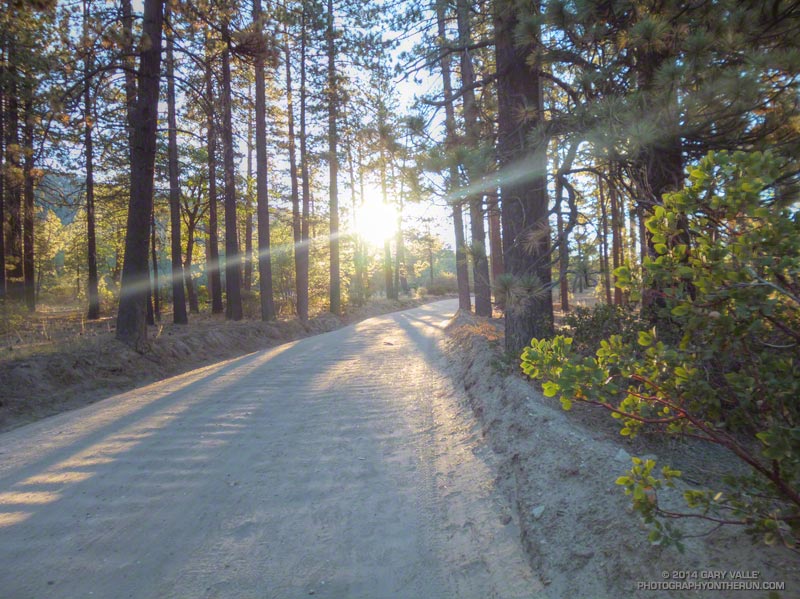
There were many changes and improvements for the 2014 edition of the Kodiak 100M & 50M. In addition to the 50M beginning at Meadow’s Edge and starting an hour earlier, nearly all of the miles to Rim Nordic (~ mile 23) were on dirt road. As much as I like single track, there were some significant benefits to this. Most importantly, it got us to Rim Nordic earlier in the day and in better shape to deal with the difficulties of the Siberia Creek section of the course.
The loss of the PCT single track on the first part of the 50 mile course was offset by the addition of the Skyline single track following the Siberia Creek climb. The Skyline and Siberia Creek Trails are both spectacular. When combined they are among the most challenging, aesthetic and rewarding trails in Southern California. Thanks to the trail work by the Big Bear Valley Trails Foundation and Kodiak volunteers the Siberia Creek Trail was in better shape this year.
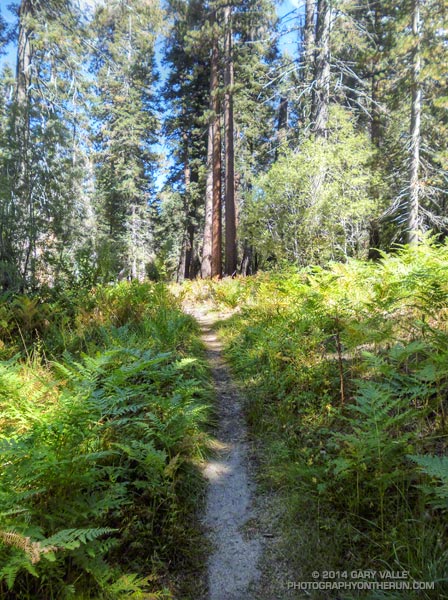
The weather was outstanding! Once the sun was up, my sleeves came off and it was shorts and short-sleeves for the remainder of the day. Reflecting the good weather, the changes in the course, the improved aid stations, and perhaps a better understanding of the character of the course, the finishing rates for both the 50M and 100M were up significantly from last year. Half of the runners that started the 100M finished and about 85% of the 50 milers finished.
Here are some photos taken during the 50 mile. The 50M/100M mileages mentioned in the descriptions are approximate.
Many thanks to R.D. Matt Smith and all of the event staff, volunteers, sponsors and runners! For more photos, stories, results and info checkout the Kodiak web site and Facebook page.
P.S. Lacey and her “Dad” Aaron Sorensen both finished the 50 mile in fine style!
Related post: Kodiak 100 & 50 Mile Ultramarathons 2013